BBC的自然纪录片“Planet Earth”(《地球脉动》)在2006年播出时曾轰动全球,被无数纪录片迷封为神作。

如今,十年磨一剑,这部史诗级纪录片的第二季在今年11月初重磅回归。

豆瓣评分9.9,这样的高分实在罕见。

开播后,霸气刷屏各大媒体和社交网站,每播出一集,人们的震撼和惊叹就又多一分。

比如这周刷屏的是这头捕食不成,反被长颈鹿踹飞的狮子……

还有这只在酷热的沙漠中跳舞的蜥蜴……

小蜥蜴为了减少和炎热地面的接触,轮流抬起两只爪子,迷之萌感。
Planet Earth中充满了这些不可思议的画面,让我们超近距离地感受大自然的奇妙与壮美。

《卫报》是这样充满诗意地描述第二季的:
A lone eagle soars high above craggy mountain tops, the tips of its wings lifting lightly in the wind.
一只孤鹰在空中翱翔,掠过崎岖的山脉,一双羽翼的尖端在风中微微翻起。

A lemur leaps from tree to tree in a dense forest, the camera following the animal with every bound.
一只狐猴在茂密丛林的树间跳跃,镜头紧随着它的每一次弹跳。
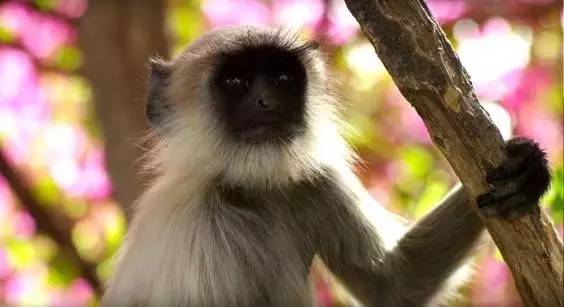
An enormous grizzly bear wriggles his back against a tree, as if caught in an embarrassing dance.
一头巨型灰熊靠在树上扭动着摩擦自己的背部,仿佛在跳着令人尴尬的舞蹈。

This is planet Earth, but not as you have ever seen it before. That’s because, more accurately, it is Planet Earth II, the latest – and perhaps most spectacular – blockbuster nature series the BBC has ever made.
这就是行星地球,但是你不曾见过的样子。因为,更准确地说,这是《地球脉动 II》,BBC制作的最新一季大型自然纪录片,或许也是BBC制作过的最令人叹为观止的纪录片。
这部让人膜拜的纪录片亮点太多,我们随便举一些……
良心制作,每一帧都美成壁纸

第一季的《地球脉动》用高清摄影实现了自然类题材记录片的一次质的飞跃。

第二季同样走在科技前沿,是BBC最早完全以UHD ,即4K技术制作的节目。
Planet Earth II marks the first BBC series to have been produced in Ultra-high-definition, or 4K.
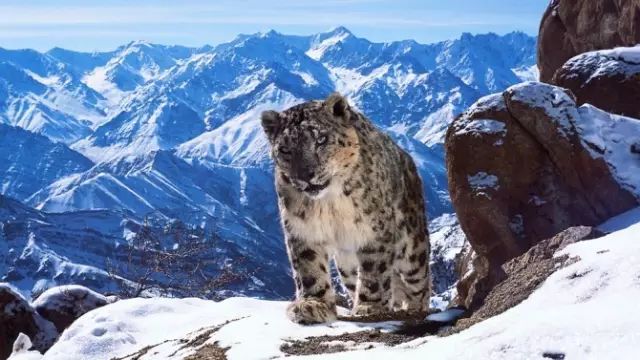
如果拥有顶级的播放设备,Planet Earth就是一场视觉盛宴。
《地球脉动》的执行制片人Mike Gunton说:
“Ten years after ‘Planet Earth’ first brought the wonders of the natural world to viewers in HD, ‘Planet Earth II’ is another game-changer. Shot in UHD, the epic scale and ambition of this series is second to none. It will be a truly immersive experience, providing audiences with a unique perspective on the most extraordinary places and animals on our planet.”
十年前,《地球脉动》首次以高清模式(HD)将大自然的神奇呈献给观众,十年后,它的续集又一次开创了先河。第二季以超清技术(UHD)拍摄,其史诗般的规模和野心独一无二。它将为观众带来切实的沉浸式观感,以独特的视角来你认识地球上最绝妙非凡的角落和动物。
第二季大量运用无人机(drone)……
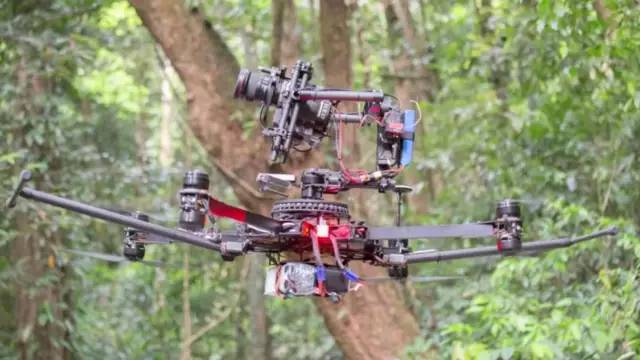
和更加成熟的摄影机稳定技术(camera stabilization technology)……
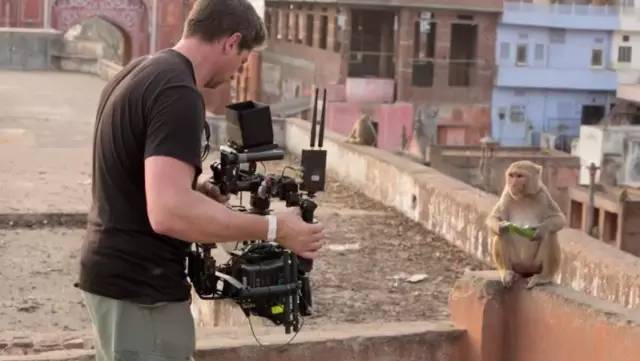
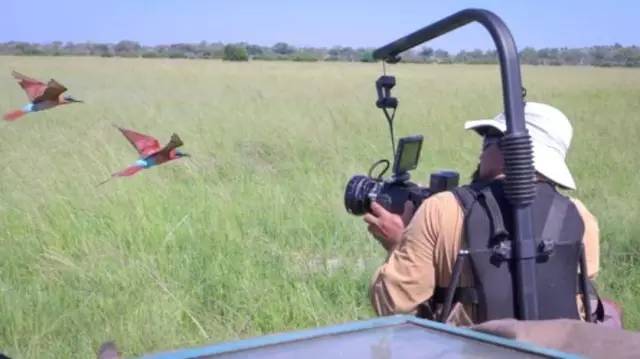
多小的动物都能被清晰捕捉到。

还有各种黑科技,比如在金雕身上绑摄像机,从而获得鸟的视角来俯瞰雪山。
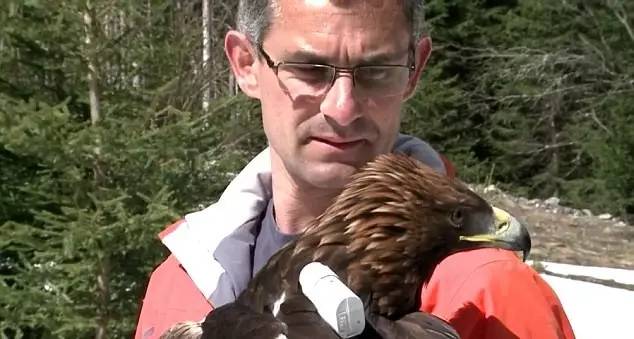
To get a golden eagle’s eye view a miniature camera was strapped to the bird’s back, while a world champion paraglider flew down the mountain using a special parachute to get immersive motion shots.
为了能给观众提供绝佳的金雕视角,我们将一个微型摄像机绑在鸟背上,并让世界冠军级的滑翔伞运动员用特殊的降落伞从山上滑下,来拍摄这种身临其境的镜头。
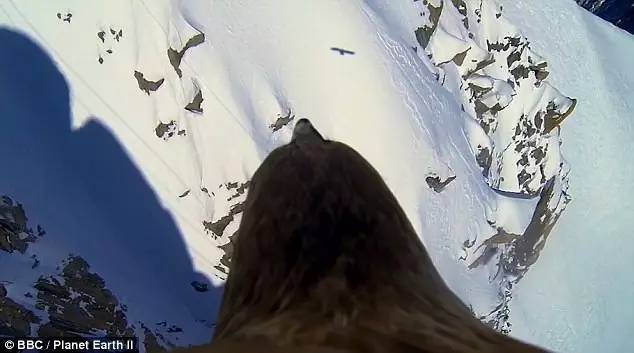
光有科技还不够,摄制团队是在用生命拍纪录片。

他们历时3年多,历经117趟摄制之旅,走访40个国家,才拍出这些震撼人心的画面。

岩浆凝固形成岛屿
其中的艰辛是常人很难体会的。
The crew camped under the stars for their entire time in Botswana – five months spread over two years – as they filmed swamp lions hunting buffalo.
两年中,摄制组有整整五个月不分昼夜地驻扎在博茨瓦纳(非洲南部内陆国),来拍摄沼泽雄狮捕食水牛的镜头。
They were surrounded by hyenas, crocodiles and hippos and while in the swamps they went barefoot so they would feel a potentially deadly crocodile beneath their feet.
鬣狗、鳄鱼和河马徘徊在他们周围,而当他们赤脚趟进沼泽地时,有致命危险的鳄鱼就在他们脚下。
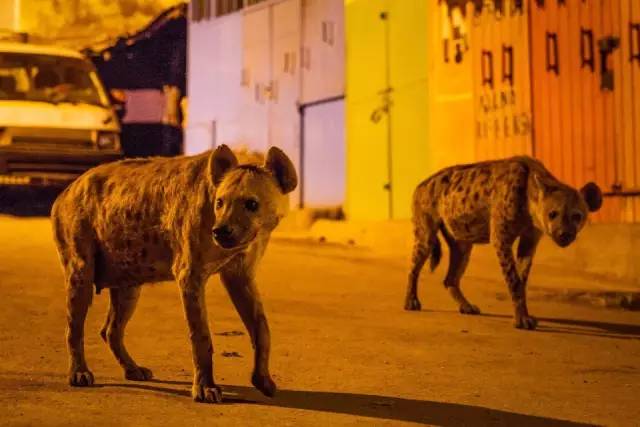
After a 7-day crossing by small yacht, the team spent more than 2 weeks camping beside a penguin colony in Antarctica.
拍摄企鹅时,摄制组坐了7天的小游艇,才抵达南极洲的企鹅聚居地,然后在那里搭帐篷拍了两周。
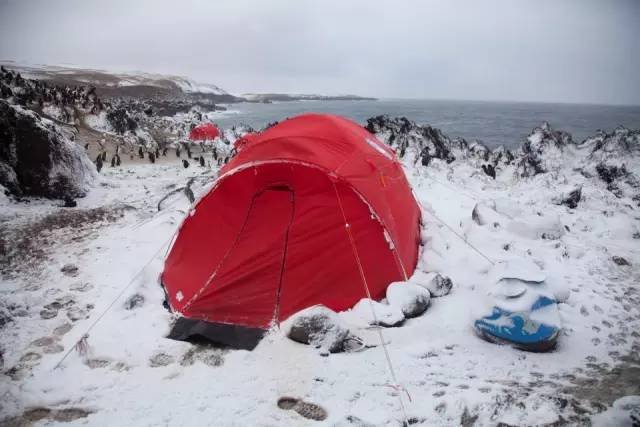
The intrepid crew managed to film bobcats as they hunted ducks and squirrels in the Rockies.
在洛基山,英勇的摄影师们拍到了山猫捕食鸭子和松鼠的镜头。

The scenes which were filmed in a gruelling five-week shoot, were another first.
这些经过五个星期艰难拍摄完成的镜头,是又一次前无古人的尝试。
可以说,Planet Earth中每一个撞击心灵的画面都是摄影师们冒着生命危险拍摄来的。

如若不是心中的那份执着和着迷,又怎么会创造出《地球脉动》这样超高水平的纪录片。
不是电影,却充满戏剧张力

Planet Earth是部一看就停不下来的纪录片,因为实在太引人入胜!
第一集播出后,那段惊心动魄的群蛇追杀小鬣蜥(iguanas)的片段在社交媒体疯狂刷屏。

我们来回顾一下视频,这是把纪录片拍出了动作惊悚大片的效果啊。
外媒评论道:
Viewers had been simultaneously gripped and horrified by the jaw-dropping, heart-stopping, dramas such as the iguana hatchlings spending their first minutes of life being chased by racer snakes.
在这些充满戏剧张力的片段中,观众能同时感受到让人目瞪口呆、心脏骤停般的紧张感与恐惧感,比如小鬣蜥竭尽全力逃脱游蛇追杀的场景。
It was an extraordinary sight - another strangely beautiful, violent, encounter we had never seen before.
这是一种非凡的奇景——另类的暴力之美;它为我们带来了前所未有的体验。
英国电视评论人Jim Shelley甚至撰文评论称:《地球脉动》比昆汀的暴力美学电影还更过瘾。

Quentin Tarantino had nothing on Sir David Attenborough as the spectacularly savage, beautifully filmed, violence continued in Planet Earth II.
与爱登堡的作品相比,昆汀的暴力电影都黯然失色了,因为《地球脉动II》延续了那壮观而野蛮、画面绝美的暴力场面。
Here, even the songbird pinned its prey up on cactus spikes to dismember them and then left the corpses hanging in a macabre larder.
在这里,就连鸣鸟也会将猎物钉在仙人掌的刺上,并肢解啄食它们,然后让残尸挂在那骇人的食橱中。
Planet Earth的引人入胜不仅体现在惊险刺激的场面中,更体现在其高明的叙事手法中。
比如在讲述企鹅爸爸和企鹅妈妈轮着班长途跋涉、历尽艰险为宝宝捕食的感人故事时,企鹅妈妈最后离去的背影能让人看到泪奔。
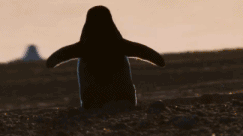
恢弘大气的配乐,都是大师手笔

看过《地球脉动》的小伙伴都会被其中充满电影质感的配乐震撼到。
没错,《地球脉动》第二季的配乐大有来头,其主题曲作者,就是大名鼎鼎的Hans Zimmer,同时他也是整部纪录片的音乐监制,这部纪录片的用心之深可见一斑。
送上预告片,用心感受一下音乐与画面的完美契合。
提到Hans Zimmer如果你感到陌生的话,那双语君(微信ID:chinadaily_mobile)给你一点小小的提示,《加勒比海盗》片尾曲就是出自这位大师之手。
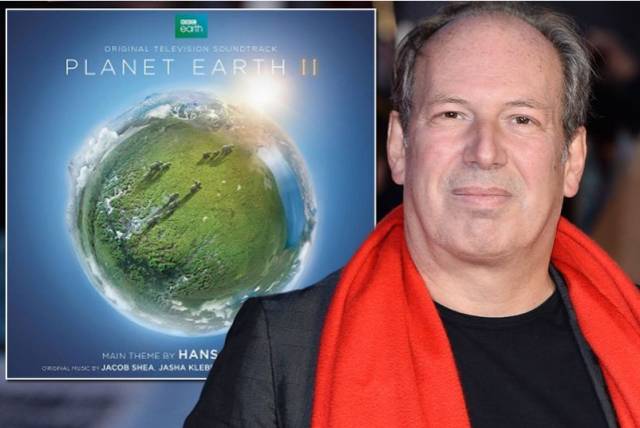
Hans Zimmer为超过150部电影配乐,包括《狮子王》、《雨人》、《盗梦空间》、《星际穿越》等。
当被问及为动物纪录片配乐有什么感受时,Hans Zimmer是这么回答的:
“We treat it entirely as a drama, which of course it is.”
“我们完全把它看做一部电影,当然它确实是。”
Hans Zimmer的音乐就是每一部作品的灵魂,无论是电影还是纪录片对于节奏氛围他都拿捏到位。
Not only is he one of Hollywood's most recognised musical talents, after writing the score for Disney's The Lion King he clearly knows all about the circle of life. He also knows how to build the tension.
不仅仅因为他是好莱坞最受认可的音乐天才之一,更因为从迪士尼动画《狮子王》作曲可以看出,他对生命圈了如指掌。(Circle of Life是《狮子王》主题曲,此处一语双关)而且,他很懂制造紧张氛围。
网友知道纪录片配乐出自Hans Zimmer之手后都难掩激动之情,纷纷在网上发声。

果然是Hans Zimmer为《地球脉动》第二季做的配乐啊!我还想呢是哪位天才创作出了这样的杰作。

《地球脉动》第二季的配乐那可不只是棒,那是相当的棒。
爱登堡爷爷的旁白让人沉醉

爱上《地球脉动》的另一个原因,那就是大卫·爱登堡(David Attenborough)的解说。
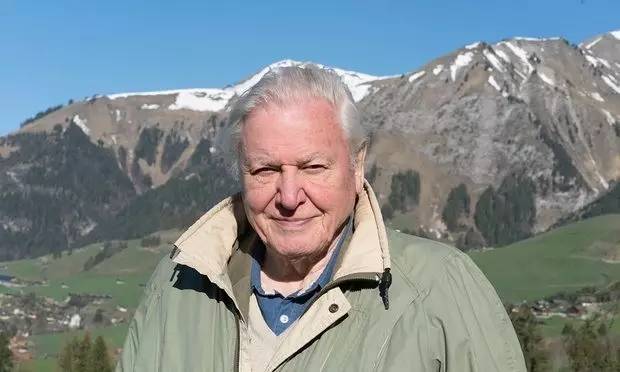
这位90岁的老爷子可是英国国宝级的人物,世界自然纪录片之父。

他被认为是有史以来旅行路程最长的人。

多年来,他用脚步丈量我们生活的这个美丽星球,制作出了一系列高水准的纪录片,包括大家耳熟能详的《蓝色星球》(The Blue Planet),《活力星球》(The Living Planet)及《生命之源》(The Trials Of Life)等……
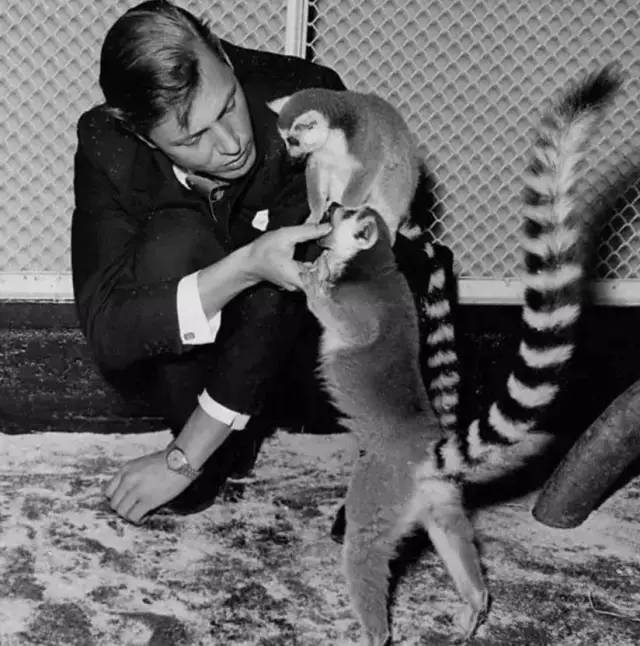
你可能不熟悉他的名字,但你一定看过他的纪录片。
如今,他已经90岁了,但他内心仍然充满激情,对自然痴迷热爱,他的脚步从未停歇。

《地球脉动 II》中,他还跟着团队上了热气球,横穿阿尔卑斯山。

对于爱登堡,与他合作和工作过的同事给出了极高的评价。
BBC节目主持人Michaela Strachan说:
He is unbelievably intelligent, not just on wildlife but on many other subjects as well.
他聪明到令人难以置信,这一点不光表现在野生动物方面,还有其他方方面面。
I don't know anybody that doesn't like David Attenborough. I know lots of people that don't like us but everyone loves him.
我还不认识不喜欢David Attenborough的人呢。我知道很多人不喜欢我们,但是每个人都爱他。

爱登堡爷爷的解说不是那种让耳朵怀孕的声音,却能让你回忆起小时候,痴迷地听着爷爷讲故事的时光。
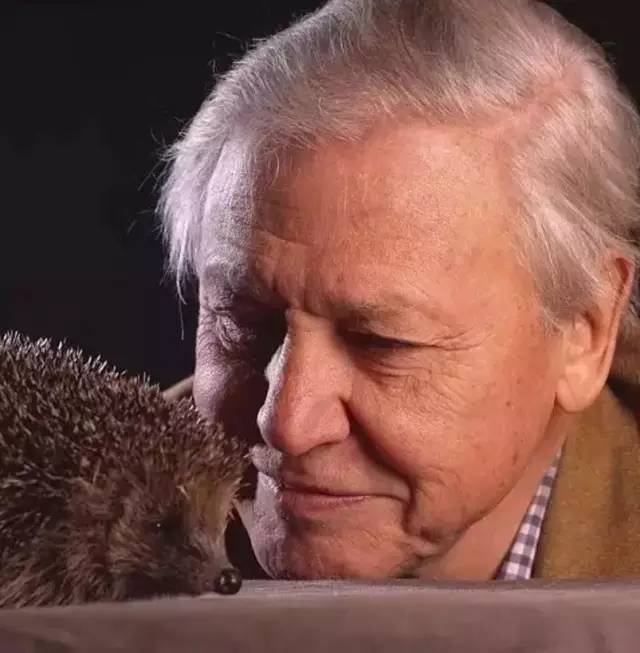
就像Twitter网友说的:
Imagine David Attenborough was your dad though. You'd still be wanting bed time stories at 50 #PlanetEarth2
脑补一下如果爱登堡是你的爸爸,那你到50岁的时候一定还想听睡前故事。
— tails (@taylorgardner_)
《每日邮报》对爱登堡的解说赞不绝口:
"Ever since Zoo Quest in the Fifties, the Attenborough technique has been to tell stories. He constructs his tales with the skill of a novelist, and presents them as grippingly as a Shakespearean actor."
从50年代的《动物园探奇》开始,爱登堡就已经开始运用他讲故事的绝技。他用小说家的技巧来构建故事,然后用莎士比亚戏剧演员那扣人心弦的感染力来讲述它们。
下面就给大家送上《地球脉动》第二季第一集《岛屿》,小伙伴们来真切地感受一下爱登堡爷爷的魅力。
双语君把开篇解说词原文摘录下来,这样精炼优美的语言,背下来都不为过啊!
Looking down from two miles above the surface of the Earth, it's impossible not to be impressed by the sheer grandeur and splendour and power of the natural world.
Ten years ago, in a television series called Planet Earth, we revealed many of those wonders, but today, much has changed.
We can now show life on our planet in entirely new ways. Bring you closer to animals than ever before. And reveal new wildlife dramas for the very first time. But that's not all. Our planet has changed too.
Never have those wildernesses been as fragile and as precious as they are today. At this crucial time for the natural world, we will journey to every corner of the globe... to explore the greatest treasures of our living planet... and reveal the extreme lengths animals go to to survive.
Finally, we will explore our cities to see how life is adapting to the newest habitat on Earth.
This is Planet Earth II.
热爱生命,敬畏自然,诚心将这部纪录片推荐给大家。
6 Episodes Intro
01
Islands
For some, remote islands offer sanctuary away from the mainland: the tiny pygmy three-toed sloth only survives because of the peace and safety offered by its Caribbean island home, while seabirds like albatross thrive in predator-free isolation. But island life isn’t always easy. In the barren, volcanic islands of Galapagos, marine iguanas have been forced to find food in the ocean, but their ingenuity allows a raft of other animals to survive – including deadly racer snakes. At the end of the Earth, more than 1.5 million penguins appear to have found their version of paradise on an active, wave-battered volcano.
Key Characters in Islands
Pygmy Three-Toed Sloth; Escudo Island, Panama
The Pygmy sloth was only confirmed as a unique species in 2001. The team worked with scientists studying the remarkable but small population of a few hundred individuals, that live on a single island the size of New York’s Central Park.
Pygmy sloths ancestors were trapped on the island of Escudo de Veraguas when the sea level rose around them, 9,000 years ago. Isolated from mainland Panama, they evolved into a new species 40% smaller than their mainland cousins.
Komodo Dragon; Komodo and Rinca Islands, Indonesia
The team worked across Rinca and Komodo Islands to capture this sequence. It’s a dangerous job for a cameraman, and up to six rangers worked with the team using just sticks as a deterrent, if the dragons got too close.
The Komodo dragon is the largest lizard on the planet growing up to three metres long and weighing in at over 70kg.
The Komodo Island population is around 2,000 individuals and they can be deadly to humans – there are reported cases of people being stalked and killed by dragons.
Marine Iguanas; Fernandina, Galapagos
Working from a small yacht to access this uninhabited, remote island location, the team arrived on Fernandina and witnessed a hatchling sprint across the beach followed by what seemed a ‘medusas head’ of snakes pour from the rock.
Racer snakes are known to also hunt fish at this location but the yearly emergence of hatchling marine iguanas is a bonanza for them.
Chinstrap Penguins; Zavodovski Island
Zavodovski Island is one of the most remote and challenging locations any film crew could choose to work. After a year of planning, the team undertook a six-week expedition to film there, camping amongst the smoke and sulphurous air alongside the world’s biggest colony of penguins, around 1.5 million chinstrap penguins.
Pygmy sloth - Escudo de Veraguas
Panama Komodo dragon - Komodo & Rinca, Indonesia
Lemurs - S & E Madagascar
Volcano erupting - Kilauea, Hawaii, USA
Marine iguanas - Fernandina Island, Galapagos
Bullers albatross - Snares Islands, New Zealand
Bird-catcher tree - Cousin & Cousine Islands, Seychelles
Red crabs & crazy ants - Christmas Island, Australia
Chinstrap penguins - Zavodovski Island, South Sandwich Islands, Antarctic
The Facts
Islands account for one sixth of the Earth’s land area, yet around 20% of its species.
Small populations and therefore small gene pools, allows evolution to happen very rapidly on islands.
Island animals are among the most threatened, of the species that have gone extinct in the last 500 years, around 80% have been islanders.

02
Mountains
In this episode we climb high into the world’s great mountain ranges. Only a few pioneering animals have what it takes to survive up here, they are amongst the most elusive and mysterious on the planet. Witness for the first time ever four snow leopards filmed together as a mother and cub become trapped in a desperate fight between two rival males. Like crazy pole dancers, Grizzly bears comically scratch their backs on trees whilst a bobcat struggles to hunt for ducks without getting its feet wet.
Key Characters in Mountains
Snow Leopards; Himalayas, Ladakh, India
The Planet Earth II sequence is the first time that four snow leopards have ever been filmed together. With as few as 3,500 snow leopards remaining in the wild, they are incredibly elusive and hard to film.
The camera traps used were re-engineered to give better operating quality and to survive in the toughest field conditions; the highest camera trap was operating close to 5000 metres.
Golden Eagle; French Alps
In order to bring viewers a first-hand experience of what it is like to hunt like a Golden Eagle soaring and diving through the Alps, the crew had to innovate – a miniature 4K camera was placed on the back of a bird, to get the Eagle’s perspective. They also worked with a world speed-rider champion who was rigged with cameras and flew down the mountain using a special parachute to get these immersive, in motion shots.
A Golden Eagle’s wingspan can reach up to seven feet and they have a huge hallux or ‘killing claw’ which averages over 6cm long.
They have the ability to spot prey as small as hares and marmots from three kilometres. They can steep dive at up to 300kmh (only a peregrine falcon is faster).
Grizzly Bears; Alberta, Canada
The team used remote camera traps concealed in rubbing trees to reveal the secret world of grizzly bears and their use of the trees like crazy pole dancers!
Grizzly bears and brown bears (alongside polar bears) are the largest land carnivores; measuring 1.5 – 2.5 metres tall, weighing up to 360kg, and can run nearly 50km per hour.
Females dig dens high in the mountains under the snow and give birth to their (often twin) cubs there.
Bobcats; Yellowstone National Park, USA
Bobcats are seldom spotted by humans, but the team captured the most intimate footage of a wild bobcat ever recorded.
Bobcats are America’s most numerous wild cat with a population of around a million.
They are highly adaptable and, compared to other predators, they feed on a wider range of prey, including wildfowl; rabbits; rodents; birds; small deer and fish. While they are often nocturnal their activity changes to suit their prey.
Filming Locations
Snow leopards - Himalayas, Ladakh, India
Grizzly bears rubbing - Alberta, Canada
Summer bears - Rocky Mountains, USA
Flamingoes - San Pedro de Atacama, Chile
Mont Blanc aerials - Chamonix, France
Golden eagles - French Alps
Viscacha - San Pedro de Atacama, Chile
Bobcats - Yellowstone NP, USA
Ibex - Arabian Peninsula, Israel
Mount Everest - Nepal
The Facts
Mountains cover one fifth of the planet’s surface.
With every 1000m of ascent, the temperature falls 6.5° C and there is a 10% increase in dangerous ultra violet radiation.
The coldest temperature ever recorded was -89.2°C at an altitude of 3488m at Vostok Station, Antarctica.
The world’s tallest mountain is Everest, at 8848m; and the greatest mountain range is The Himalaya, the third largest deposit of ice and snow (after the two Poles).
03
Jungles
Jungles are the richest places on Earth. A magical world of surprise, drama and unforgettable wild characters. From the jungles of Brazil, home to caiman hunting jaguars and strange jungle dolphins that swim in the tree tops, to Costa Rica where ninja frogs fight huge wasps, we watch as the animals face life in the most competitive place on Earth. We follow alongside the beautiful indri as she bounces through the forest in Madagascar and stay out late at night to witness glow-in-the-dark creatures never before filmed! There are even mini ‘dragon lizards’ with a special trick to deal with life in the jungle!
Key Characters in Jungles
Bioluminescent Fungi; Coconut Forest, Brazil
New low light cameras helped the team to film the amazing glowing fungi of Brazil for the first time. Birds Of Paradise; West Papua, Indonesia
For the first time, the display of the Wilson’s bird of paradise is revealed from its true perspective – from above – as the female would see it.
Filming Locations
Spider monkeys - Flores, Guatemala
Araguaia river dolphins - Cantão Park, Brazil
Jaguars - Brazil
Bioluminescent fungi - Coconut forest, Brazil
Birds of paradise - West Papua, Indonesia
Indri - Andasibe, Madagascar
Humming birds - Tandayapa Valley, Ecuador
Glass frogs - Siquirres, Costa Rica
Draco - Kuching, Malaysia
Railroad worms - Sorocaba, Brazil
The Facts
More new species are found in the worlds jungles than anywhere else on land.
Jungles cover less than six percent of land, but are home to over half the plants and animals on Earth.
Jungles are richest and most crowded place on Earth, home to a billion individuals trying to survive. - Only two percent of the sun’s rays reach the jungles forest floor.
Each day the world’s jungles make five million tonnes of water, one fifth of the fresh water on the planet is created here.
04
Deserts
In this episode we visit the world’s deserts, a land of extremes that pushes life to the limit. Animals here have developed ingenious ways of dealing with the hostile conditions – giving rise to the most incredible survival stories on Earth. A pride of desert lions are so hungry they risk hunting a giraffe several times their size, whilst male sand grouse fly nearly 200 kilometres each day from their nests to the nearest waterhole, simply to collect water for their chicks – and when they arrive there are predators waiting for them. And, never filmed before, a tiny bat takes on one of the world’s deadliest scorpions just to get a meal.
Key Characters in Deserts
Locust Swarm; South West Madagascar
Though locusts are normally solitary, the team filmed a swarm of several billion. A swarm of this size may only be seen once a decade and is one of the largest ever caught on film.
This swarm stretched over 300 square kilometres. It could travel up to 100 kilometres and consume 40,000 tonnes of vegetation per day!
Golden Mole; Namib Desert, Namibia
Golden moles are rarely seen– they spend most of their time under the sand, and what’s more they are tiny, only the size of a ping pong ball!
A Golden mole’s eyes are covered in fur, meaning it’s totally blind – but well suited for life underground. To compensate, it has very acute hearing – its entire head acts as an amplifier picking up vibrations in the sand.
Though only small, it can travel up to 1 km per night in search of food.
Bats vs Scorpion; Negev Desert, Israel
For the first time the crew filmed the long-eared bat (Otonycteris hemprichii to be specific) as it |hunts its surprising prey, the death stalker scorpion, on the ground. This scorpions venom is capable of killing a human.
Filming Locations
Locust swarms - South West Madagascar
Harris Hawks - Sonoran desert, USA
Sand grouse - NamibRand, Namibia
Mustang - Nevada, USA
Bats v scorpions - Negev Desert, Israel
Zebra - Makgadikgadi Salt Pans, Botswana
Shrike larders - New Mexico, USA
Desert greening - Lomas de lachay, Peru
Desert canyons - Arizona, USA (Zion National Park, Arches National Park, Antelope Canyon)
The Facts
Desert temperatures can reach a scorching 58°C, and all over the world these are rising more than the global average, and many are getting hotter and larger.
Every year a further 80,000 square kilometres of grass and farmland in already dry areas, are turned to desert.
05
Grasslands
Grasslands cover one quarter of all land and support the greatest gatherings of wildlife on Earth. The extraordinary creatures that live here must survive the most hostile seasons on the planet. From bizarre looking Saiga antelope in Asia, rarely seen by humans, to the giant ant-eaters of Brazil, grassland animals show remarkable survival techniques. In the flooded Okavango, lions take on formidable buffalo in epic battles, stunning bee-eaters ride on the back of ostriches like miniature jockeys, while caribou embark on great migrations, where they must cross paths with their nemesis, Arctic wolves.
Key Characters in Grasslands
Swamp Lions; Okavango Delta, Botswana
The crew spent five months, spread over two years, in the remotest parts of the Okavango Delta to capture the remarkable sequence of lions taking on their deadliest opponent, Cape buffalo in flooded grasslands.
The crew camped the entire time in the wild, under the stars, surrounded by hyena, crocodiles and hippos, their only safety and refuge – a small boat and their filming vehicle.
Only a few prides of lions in the world have learnt how to hunt in the swamps.
Buffalo are extremely dangerous – they kill more lions than any other animal.
An adult bull buffalo weighs almost a tonne, more than the weight of six lionesses combined.
Serval Cat; Karoo, South Africa
The crew had a remarkable opportunity to follow a highly habituated serval cat. It meant they could, for the first time ever, use a Steadicam to get up close and film a wild serval cat hunting and get intimate footage as she rediscovered her hunting skills.
Servals have, relative to body size, the longest legs and largest ears of any cat in the world. They can leap over three metres through the air.
Filming Locations
Elephants - Kaziranga, India
Saiga antelope - Eurasian steppe, Kazakhstan
Harvest mice - Norfolk, UK
Widowbirds - Maasai mara, Kenya
Anteaters - Cerrado, Brazil
Serval cat - Karoo, South Africa
Bison and fox - Yellowstone NP, USA
Swamp cats - Okavango Delta, Botswana
Caribou - Barrenlands, Canada
Termite mounds - Northern Territories, Australia
Grass-cutter ants - Reserva al Baugal, Argentina
Bee-eaters - Savute, Botswana
The Facts
Grasslands cover one quarter of all land on Earth.
Grasslands support and sustain more large animals than any other habitat and are home to the greatest gatherings of wildlife on Earth.
There are over 10,000 species of grass, found on all seven continents.
From the baking equator to the arctic circle, grasslands are able to survive the most extreme seasons on Earth.
Unlike other plants, grasses grow from their base and not their tip, so they are almost indestructible, capable of surviving fire, flooding, freezing and drought.

06
Cities
Cities are growing at a faster rate than any other habitat on Earth. They may seem an unlikely place for animals to thrive, but for the bold this is a world of surprising opportunity. Leopards prowl the streets of Mumbai, peregrine falcons hunt amongst New York’s skyscrapers and a million starlings perform spectacular aerial dances over Rome. We welcome some creatures into our cities; in Jodhpur langurs are revered as religious deities and in Harar locals live in harmony with wild hyenas. Many animals, however, are struggling to cope in the urban jungle. As the architects of this environment will we choose to build cities that create a home for both us and for wildlife?
Key Characters in Cities
Leopards; Mumbai, India
Mumbai has over 20 million people, but also a thriving population of leopards with the highest concentration of these cats anywhere on the planet.
Using the latest technology – infrared camera traps and thermal cameras, the team captured never seen before behaviour of Mumbai leopards using the cover of city noise and their stealth to hunt abundant domesticated animals, brought in to the city by man.
Leopards have attacked almost two hundred people in Mumbai the last twenty-five years.
Peregrine Falcons; New York, USA
It took nine months just to get permission for the team to film from the rooftops of skyscrapers and from a helicopter in the heart of New York City. The effort paid off and for the first time the team were able to capture a sequence of successful hunting behaviour. This was also the first time that anyone has filmed aerials of the fastest bird in the world dropping from a height at speeds of over 300kph.
A pair of spotted hyenas search for scraps of food on the streets of Harar in Ethiopia
New York City has the highest concentration of nesting Peregrines in the world, they have made their homes in the city’s skyscrapers which perform the role of cliff edges, the traditional habitat for Peregrine Falcons.
City living can be advantageous for these well adapted birds, they are able to soar over the city with very little effort taking advantage of the updrafts from buildings and the warm air rising from the metal and glass for efficient flight.
Pigeons reside in the city all year round, a plentiful food source for the peregrines which means they do not need to migrate.
For this shoot, the Planet EarthII crew were helped by expert conservation biologists and documented their important work monitoring the local population of Peregrines.
Hyenas; Harar, Ethiopia
The filming team used the latest 4K low-light cameras. At times they were surrounded by over 100 fighting hyenas and at other times they were astonished at seeing small cats swipe at hyenas competing over scraps of meat. The difference in attitude between these hyenas inside and outside of the city walls is astounding.
Two hyena clans roam into the streets of Harar, Ethiopia, every night, and they have done so for the last 400 years. The clans fight outside the town to assess which is dominant in the city where they gain access to the bones left on the streets by the city’s butchers.
Spotted hyenas are the second largest land predator in Africa after the lion and throughout their range they are feared for their raids on towns where they have been known to pick off small children. But the inhabitants of Harar have decided to invite them in, believing that they consume the evil spirits every time they cackle. One family even chooses to hand feed these wild animals
Filming Locations
Catfish hunting pigeons - Albi, France
Starling murmurations - Rome, Italy
Turtle hatchlings - Barbados
City lights - Hong Kong
Peregrine falcons - New York, USA
Raccoons - Toronto, Canada
Hyenas - Harar, Ethiopia
Avatar city - Singapore
Macaques - Jaipur, India
Leopards - Mumbai, India
Langurs - Jodpur, India
Bower birds - Townsville, Australia
The Facts
The urban environment is the newest and fastest growing habitat on our planet. In the next decade, the urban environment is predicted to grow by nearly thirty percent.
This man made environment is far brighter, louder and busier than anywhere in the natural world.
Four billion people, more than half of the human population, now live in the urban environment, all animals that come here will have to overcome their fear of man.
It is in the urban environment that animals have to contend with the greatest change that is happening to the surface of our planet, but for the bold, this new world offers fresh territory to expand into


